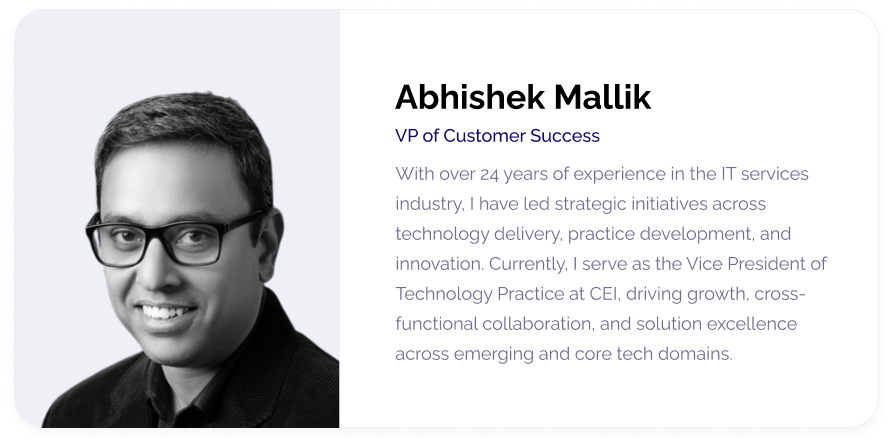Applied AI: Balancing Promise, Panic, and Practicality
Look around today and it’s impossible to ignore the rise of applied Artificial Intelligence (AI). From chatbots answering customer queries to algorithms predicting supply chain bottlenecks, AI has moved beyond research labs and into everyday business. It promises unprecedented efficiency, sharper insights, and a new level of personalization. Yet alongside this promise comes something harder to manage—uncertainty, fear, and at times, unnecessary panic.
Consider a major U.S. retailer that implemented AI-powered inventory management and saw out-of-stock rates drop by 30%, while staff spent less time on manual audits and more on customer service. This is just one illustration of how businesses are leveraging applied AI to drive tangible improvements in performance and employee satisfaction.
Adoption is broadening: 78% of companies say they use AI in at least one business function, up from 72% a year earlier. McKinsey & Company
GenAI is now “regular” in many firms: 65% report regular use of generative AI, nearly double versus the prior survey period. McKinsey & Company
Productivity upside is real—when scoped well: Controlled experiments show generative AI helps people complete more tasks, faster, and at higher quality in many knowledge-work settings. Boston Consulting Group+1
The Opportunity: Why Businesses Can’t Ignore Applied AI
Applied AI isn’t about futuristic robots; it’s about making today’s work smarter. Companies are already benefiting from:
- Efficiency: Automating repetitive processes frees teams to focus on creative problem-solving.
- Insight: AI highlights hidden patterns in oceans of data.
- Customer Experience: Service becomes faster, more personal, and more consistent.
In other words, AI can help businesses do more with less and respond faster to change.
The macro signals back this up: investment keeps climbing, and “regular” usage is moving from pilots to day-to-day work in many firms. McKinsey & Company+1
The Threat: Unknowns and Unnecessary Panic
The same technology that excites investors and executives can also spark fear. Employees worry about job displacement. Customers question whether decisions are being made by humans or machines. Leaders face the unknown—what if the system makes a mistake, or worse, “hallucinates” and delivers a confident but false answer?
Some of these risks are real, but others are driven by hype and misunderstanding. The challenge is knowing which is which.
Surveys highlight top obstacles like accuracy concerns and lack of the right proprietary data to tune models. IBM
The Dilemma for IT Leaders
Business leaders sit at the crossroads of innovation and responsibility. They’re asked to push boundaries with AI while also protecting people, brand reputation, and compliance. The key questions are:
- Where should AI be applied? Automating invoices or detecting fraud makes sense. But applying AI to critical medical advice or legal judgments demands extreme caution.
- Where should AI be avoided? Processes requiring human empathy, ethical judgment, or nuanced decision-making should not be left entirely to machines.
Navigating this line is no simple task—it requires both vision and restraint.
A practical framing:
- Green-light zones: document summarization, knowledge search, coding assistance, personalized marketing, fraud/anomaly detection—areas with clear checks and measurable outcomes.
- Amber zones: finance approvals, HR decisions, medical or legal guidance—use AI to assist, not decide. Keep humans firmly in the loop.
- Red-line zones: anything without adequate data quality, auditability, or defined accountability.
The Ethical Lens: Why “Can We?” Isn’t Enough
AI’s biggest technical weakness today is hallucination—the tendency to generate convincing but incorrect answers. In harmless scenarios, it’s little more than a glitch. In high-stakes business decisions, it can create serious damage.
Beyond accuracy, ethics also matter. AI must be transparent, fair, and respectful of privacy. Leaders must remember just because AI can do something doesn’t mean it should.
Two realities must shape every deployment:
- Hallucination happens: Large language models can generate confident nonsense. In legal benchmarking, general-purpose chatbots hallucinated 58–82% of the time—proof that high-stakes use needs strict guardrails. Stanford HAI
- Trust is fragile: A majority of workers worry about accuracy, bias, and security; more control and transparency are top asks from the public and experts alike. Salesforce+1
The Way Forward: Extracting Maximum Benefit
How can businesses capture AI’s upside without being derailed by its risks?
- Start with clear, narrow problems—don’t try to “AI everything.”
- Keep humans in the loop where outcomes carry high stakes.
- Communicate openly with employees and customers about when AI is used.
- Draw boundaries—know where AI is off-limits.
- Invest in education so teams learn to work with AI, not against it.
Start narrow, prove value fast
Pick two or three high-volume, low-risk use cases (e.g., meeting notes, ticket triage drafts). Set a 6–8 week success metric (cycle time, CSAT, cost per case). McKinsey & Company
Conclusion: A Pragmatic Path Ahead
Applied AI is neither a magic solution nor a lurking threat—it’s a tool. Used wisely, it can reshape business for the better. Used recklessly, it risks eroding trust. The leaders who succeed will be those who balance innovation with ethics, ambition with responsibility.
The next step isn’t asking if AI belongs in your business. It’s asking where and how. The answer to that question will determine whether AI becomes a source of progress—or panic.
